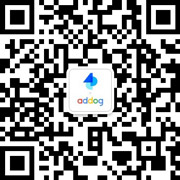
本案例默认翻译为中文,点击可切换回原语言
已切换成原语言,点击可翻译成中文
艾玛
案例简介:为什么这项工作与创意数据相关? 已经进行了有关网络欺凌对大脑的影响以及它如何与自杀和自我伤害的风险相关的研究,但前提是事实。但是人们从来没有能够实时看到网络欺凌的影响。通过将复杂的数据,规模和各种程度的毒性转化为简单而有创意的视觉设备,它使普通的青少年,教育者和父母可以可视化网络欺凌对青少年大脑的影响。 描述有关您所在国家/地区的健康与健康通信的任何限制或法规,包括: 不适用 健康与保健工作必须证明它如何满足 “改变生活的创造力” 的标准。为什么你的工作与健康相关? 青少年不知道网络欺凌对他们大脑的影响,他们的父母也不知道它可能产生的进步影响,直到为时已晚。为了教育青少年、教育工作者和家长了解网络欺凌可能产生的影响,我们需要找到一种方法来翻译复杂而密集的数据,这种方法不仅能告诉我们的目标,还能向我们的目标展示这种影响到底是什么样子的。 背景 根据国家防止虐待儿童协会的数据,在短短五年的时间里,网络欺凌88% 增加。由于网络欺凌,自我伤害和自杀的可能性增加了2倍以上,但人们没有意识到网络欺凌的破坏性后果。直到为时已晚。我们需要帮助人们看到网络欺凌对我们年轻人的影响。 描述想法/数据解决方案 (投票20%) 为了使Emma栩栩如生,我们需要成千上万的数据输入,以反映普通青少年每天在网上接触的情况。为了了解这一点,我们采访了青少年的在线行为,并根据他们的数据消耗创建了一系列民族志。我们挖掘了他们接触到的网站、应用程序和标签,并创造了他们日常在线生活的数字阴影。 从那里,根据我们收集的数据和最近的临床研究,我们创建了一个基于机器学习的情感分析工具。它使我们能够在每个评论中对毒性水平进行分类。然后将高水平的毒性转化为艾玛生命体征中的可触及信息。 数据是洞察力的来源,也是表达这一想法的媒介。通过将艾玛的生命体征与研究中的实际生物标记相关联,该项目不仅使我们提高了认识,而且还开发了一种教育工具,可以帮助青少年,教育者和父母了解网络欺凌的实时影响。 描述数据驱动策略 (投票30%) 根据对青少年的采访,我们使用了广泛的数据报废工具,使我们能够访问青少年在网上接触到的数十万条评论。我们搜索了多个平台,包括但不限于Facebook、Twitter、Instagram、Reddit、Twitch和各种博客,然后收集了一个与青少年每月平均曝光率相当的数据集。 然后使用Erin Burke等人最近的临床研究。同伴受害及其对青少年大脑发育和精神病理学的影响,我们创建了剧毒评论与Emma处理负面评论能力下降之间的直接相关性。 在根据临床研究结果运行Emma的模拟之后,临床心理学家Jeff Gardere博士帮助我们使用数据点创建了一个叙述,以将它们与Emma的事件视界相关联。 描述数据的创造性使用,或者数据如何增强创造性输出 (投票30%) 构建Emma的关键组件是我们用来识别有毒评论的机器学习情感分析模型。该模型基于Google的对话AI团队提供的数据集,并使用六个不同的标签对评论进行分类: 有毒,严重有毒,淫秽,威胁,侮辱,身份/仇恨。 列出数据驱动结果 (投票20%) 经过52个小时的处理150,000多个评论后,艾玛大脑中分配给情绪分析的记忆耗尽了。通过用每一个有毒的评论侵蚀艾玛的能力,形成了一个恶性循环,就像一个青少年的大脑一样,在那里我们了解到,如果持续存在,逃避欺凌的回声室是不可能的。人类大脑的某些部分受到消极循环的阻碍,并具有可测量的物理结果。我们通过删除Emma处理能力中的重要内存分配来重新创建此循环,最终导致关闭。
艾玛
案例简介:Why is this work relevant for Creative Data? There have been studies done on the impact of cyberbullying on the brain and how it correlates to risks of suicide and self-harm, but only after the fact. But never have people been able to see the impact of cyberbullying in real-time. By translating complicated data, scales, and various levels of toxicity into a simple and creative visual device, it allowed the average teen, educator and parent to visualize the impact cyberbullying has on a teenager’s brain. Describe any restrictions or regulations regarding Health & Wellness communications in your country/region including: N/A Health & Wellness work must demonstrate how it meets the criteria 'life-changing creativity'. Why is your work relevant for Health & Wellness? Teens don’t know the impact cyberbullying has on their brains and their parents don’t know about the progressive impact it can have, until it’s too late. To educate teens, educators and parents about the impact cyberbullying can have, we needed to find a way to translate complicated and dense data in a way that wouldn’t just tell our target about it but show our target what that impact really looked like. Background According to the National Society for the Prevention of Cruelty to Children, in just a five-year period, there has been an 88% increase in cyberbullying. And the likelihood of self-harm and suicide increases more than 2x because of cyberbullying, but people don’t recognize are the devastating consequences cyberbullying has. Until it’s too late. We needed to help people see the impact cyberbullying has on our youth. Describe the idea/data solution (20% of vote) To bring Emma to life, we needed hundreds of thousands of data inputs that would mirror what the average teen is exposed to online on an everyday basis. To get this, we interviewed teens about their online behaviors and created a series of ethnographies based on their data consumption. We mined the websites, apps, and hashtags they were exposed to and created a digital shadow of their daily online lives. From there, based on the data we gathered and a recent clinical study, we created a machine learning based sentiment analysis tool. It allowed us to categorize toxicity levels in each individual comment. High levels of toxicity were then translated to palpable information in Emma’s vitals. Data was the source of the insight as well as the medium that expressed the idea. By correlating Emma’s vitals with actual biological markers from the study, the project allowed us to not only raise awareness, but develop an education tool that can help teach teens, educators and parents about the real-time impact of cyberbullying. Describe the data driven strategy (30% of vote) Based on interviews with teens, we used a wide range of data scrapping tools that gave us access to the hundreds of thousands of comments our teens are exposed to online. We searched multiple platforms including, but not limited to, Facebook, Twitter, Instagram, Reddit, Twitch, and various blogs, and then collected a dataset comparable to the average monthly exposure of a teenager. Then using a recent clinical study by Erin Burke et al. Peer Victimization and its impact on adolescent brain development and psychopathology, we created a direct correlation between highly toxic comments and the decrease in Emma’s ability to process negative comments. After running Emma’s simulation based on the clinical study findings, Dr. Jeff Gardere, a clinical psychologist, helped us create a narrative using the data points to correlate them with Emma’s event horizon. Describe the creative use of data, or how the data enhanced the creative output (30% of vote) The key component in building Emma was the machine learning sentiment analysis model that we used to identify toxic comments. The model was based on the dataset provided by the Conversation AI team from Google and used six different labels to classify the comments: Toxic, Severely Toxic, Obscene, Threat, Insult, Identity/Hate. List the data driven results (20% of vote) After 52 hours of processing more than 150,000 comments, the memory allocated for emotional analysis in Emma’s brain ran out. By eroding Emma’s ability with every toxic comment, a vicious cycle was created, much like a teenager’s brain, where we learned that escaping the echo chamber of bullying is impossible, if persistent. Parts of the human brain are hindered by a loop of negativity with measurable physical results. We recreated this loop by removing vital memory allocation in Emma’s processing power, eventually resulting in a shutdown.
Emma
案例简介:为什么这项工作与创意数据相关? 已经进行了有关网络欺凌对大脑的影响以及它如何与自杀和自我伤害的风险相关的研究,但前提是事实。但是人们从来没有能够实时看到网络欺凌的影响。通过将复杂的数据,规模和各种程度的毒性转化为简单而有创意的视觉设备,它使普通的青少年,教育者和父母可以可视化网络欺凌对青少年大脑的影响。 描述有关您所在国家/地区的健康与健康通信的任何限制或法规,包括: 不适用 健康与保健工作必须证明它如何满足 “改变生活的创造力” 的标准。为什么你的工作与健康相关? 青少年不知道网络欺凌对他们大脑的影响,他们的父母也不知道它可能产生的进步影响,直到为时已晚。为了教育青少年、教育工作者和家长了解网络欺凌可能产生的影响,我们需要找到一种方法来翻译复杂而密集的数据,这种方法不仅能告诉我们的目标,还能向我们的目标展示这种影响到底是什么样子的。 背景 根据国家防止虐待儿童协会的数据,在短短五年的时间里,网络欺凌88% 增加。由于网络欺凌,自我伤害和自杀的可能性增加了2倍以上,但人们没有意识到网络欺凌的破坏性后果。直到为时已晚。我们需要帮助人们看到网络欺凌对我们年轻人的影响。 描述想法/数据解决方案 (投票20%) 为了使Emma栩栩如生,我们需要成千上万的数据输入,以反映普通青少年每天在网上接触的情况。为了了解这一点,我们采访了青少年的在线行为,并根据他们的数据消耗创建了一系列民族志。我们挖掘了他们接触到的网站、应用程序和标签,并创造了他们日常在线生活的数字阴影。 从那里,根据我们收集的数据和最近的临床研究,我们创建了一个基于机器学习的情感分析工具。它使我们能够在每个评论中对毒性水平进行分类。然后将高水平的毒性转化为艾玛生命体征中的可触及信息。 数据是洞察力的来源,也是表达这一想法的媒介。通过将艾玛的生命体征与研究中的实际生物标记相关联,该项目不仅使我们提高了认识,而且还开发了一种教育工具,可以帮助青少年,教育者和父母了解网络欺凌的实时影响。 描述数据驱动策略 (投票30%) 根据对青少年的采访,我们使用了广泛的数据报废工具,使我们能够访问青少年在网上接触到的数十万条评论。我们搜索了多个平台,包括但不限于Facebook、Twitter、Instagram、Reddit、Twitch和各种博客,然后收集了一个与青少年每月平均曝光率相当的数据集。 然后使用Erin Burke等人最近的临床研究。同伴受害及其对青少年大脑发育和精神病理学的影响,我们创建了剧毒评论与Emma处理负面评论能力下降之间的直接相关性。 在根据临床研究结果运行Emma的模拟之后,临床心理学家Jeff Gardere博士帮助我们使用数据点创建了一个叙述,以将它们与Emma的事件视界相关联。 描述数据的创造性使用,或者数据如何增强创造性输出 (投票30%) 构建Emma的关键组件是我们用来识别有毒评论的机器学习情感分析模型。该模型基于Google的对话AI团队提供的数据集,并使用六个不同的标签对评论进行分类: 有毒,严重有毒,淫秽,威胁,侮辱,身份/仇恨。 列出数据驱动结果 (投票20%) 经过52个小时的处理150,000多个评论后,艾玛大脑中分配给情绪分析的记忆耗尽了。通过用每一个有毒的评论侵蚀艾玛的能力,形成了一个恶性循环,就像一个青少年的大脑一样,在那里我们了解到,如果持续存在,逃避欺凌的回声室是不可能的。人类大脑的某些部分受到消极循环的阻碍,并具有可测量的物理结果。我们通过删除Emma处理能力中的重要内存分配来重新创建此循环,最终导致关闭。
Emma
案例简介:Why is this work relevant for Creative Data? There have been studies done on the impact of cyberbullying on the brain and how it correlates to risks of suicide and self-harm, but only after the fact. But never have people been able to see the impact of cyberbullying in real-time. By translating complicated data, scales, and various levels of toxicity into a simple and creative visual device, it allowed the average teen, educator and parent to visualize the impact cyberbullying has on a teenager’s brain. Describe any restrictions or regulations regarding Health & Wellness communications in your country/region including: N/A Health & Wellness work must demonstrate how it meets the criteria 'life-changing creativity'. Why is your work relevant for Health & Wellness? Teens don’t know the impact cyberbullying has on their brains and their parents don’t know about the progressive impact it can have, until it’s too late. To educate teens, educators and parents about the impact cyberbullying can have, we needed to find a way to translate complicated and dense data in a way that wouldn’t just tell our target about it but show our target what that impact really looked like. Background According to the National Society for the Prevention of Cruelty to Children, in just a five-year period, there has been an 88% increase in cyberbullying. And the likelihood of self-harm and suicide increases more than 2x because of cyberbullying, but people don’t recognize are the devastating consequences cyberbullying has. Until it’s too late. We needed to help people see the impact cyberbullying has on our youth. Describe the idea/data solution (20% of vote) To bring Emma to life, we needed hundreds of thousands of data inputs that would mirror what the average teen is exposed to online on an everyday basis. To get this, we interviewed teens about their online behaviors and created a series of ethnographies based on their data consumption. We mined the websites, apps, and hashtags they were exposed to and created a digital shadow of their daily online lives. From there, based on the data we gathered and a recent clinical study, we created a machine learning based sentiment analysis tool. It allowed us to categorize toxicity levels in each individual comment. High levels of toxicity were then translated to palpable information in Emma’s vitals. Data was the source of the insight as well as the medium that expressed the idea. By correlating Emma’s vitals with actual biological markers from the study, the project allowed us to not only raise awareness, but develop an education tool that can help teach teens, educators and parents about the real-time impact of cyberbullying. Describe the data driven strategy (30% of vote) Based on interviews with teens, we used a wide range of data scrapping tools that gave us access to the hundreds of thousands of comments our teens are exposed to online. We searched multiple platforms including, but not limited to, Facebook, Twitter, Instagram, Reddit, Twitch, and various blogs, and then collected a dataset comparable to the average monthly exposure of a teenager. Then using a recent clinical study by Erin Burke et al. Peer Victimization and its impact on adolescent brain development and psychopathology, we created a direct correlation between highly toxic comments and the decrease in Emma’s ability to process negative comments. After running Emma’s simulation based on the clinical study findings, Dr. Jeff Gardere, a clinical psychologist, helped us create a narrative using the data points to correlate them with Emma’s event horizon. Describe the creative use of data, or how the data enhanced the creative output (30% of vote) The key component in building Emma was the machine learning sentiment analysis model that we used to identify toxic comments. The model was based on the dataset provided by the Conversation AI team from Google and used six different labels to classify the comments: Toxic, Severely Toxic, Obscene, Threat, Insult, Identity/Hate. List the data driven results (20% of vote) After 52 hours of processing more than 150,000 comments, the memory allocated for emotional analysis in Emma’s brain ran out. By eroding Emma’s ability with every toxic comment, a vicious cycle was created, much like a teenager’s brain, where we learned that escaping the echo chamber of bullying is impossible, if persistent. Parts of the human brain are hindered by a loop of negativity with measurable physical results. We recreated this loop by removing vital memory allocation in Emma’s processing power, eventually resulting in a shutdown.
艾玛
暂无简介
Emma
暂无简介
基本信息
- 广告战役: #Stomp Out Bullying-网络-50a3#
- 广告品牌: Stomp Out Bullying
- 发布日期: 2020
- 行业领域: 个人护理 , 日用品/母婴
- 媒体类别: 海报/平面
- 广告语言: 英语
- 媒介平台: 网络
- 获得奖项:
暂无评分
已有{{caseInfo.tatolPeople}}人评分
创作者
案例详情
涵盖全球100万精选案例,涉及2800个行业,包含63000个品牌
热门节日97个,23个维度智能搜索
-

项目比稿
品类案例按时间展现,借鉴同品牌策略,比稿提案轻松中标
-

创意策划
任意搜索品牌关键词,脑洞创意策划1秒呈现
-

竞品调研
一键搜索竞品往年广告,一眼掌握对手市场定位
-

行业研究
热词查看洞悉爆点,抢占行业趋势红利
登录后查看全部案例信息
如果您是本案的创作者或参与者 可对信息进行完善







